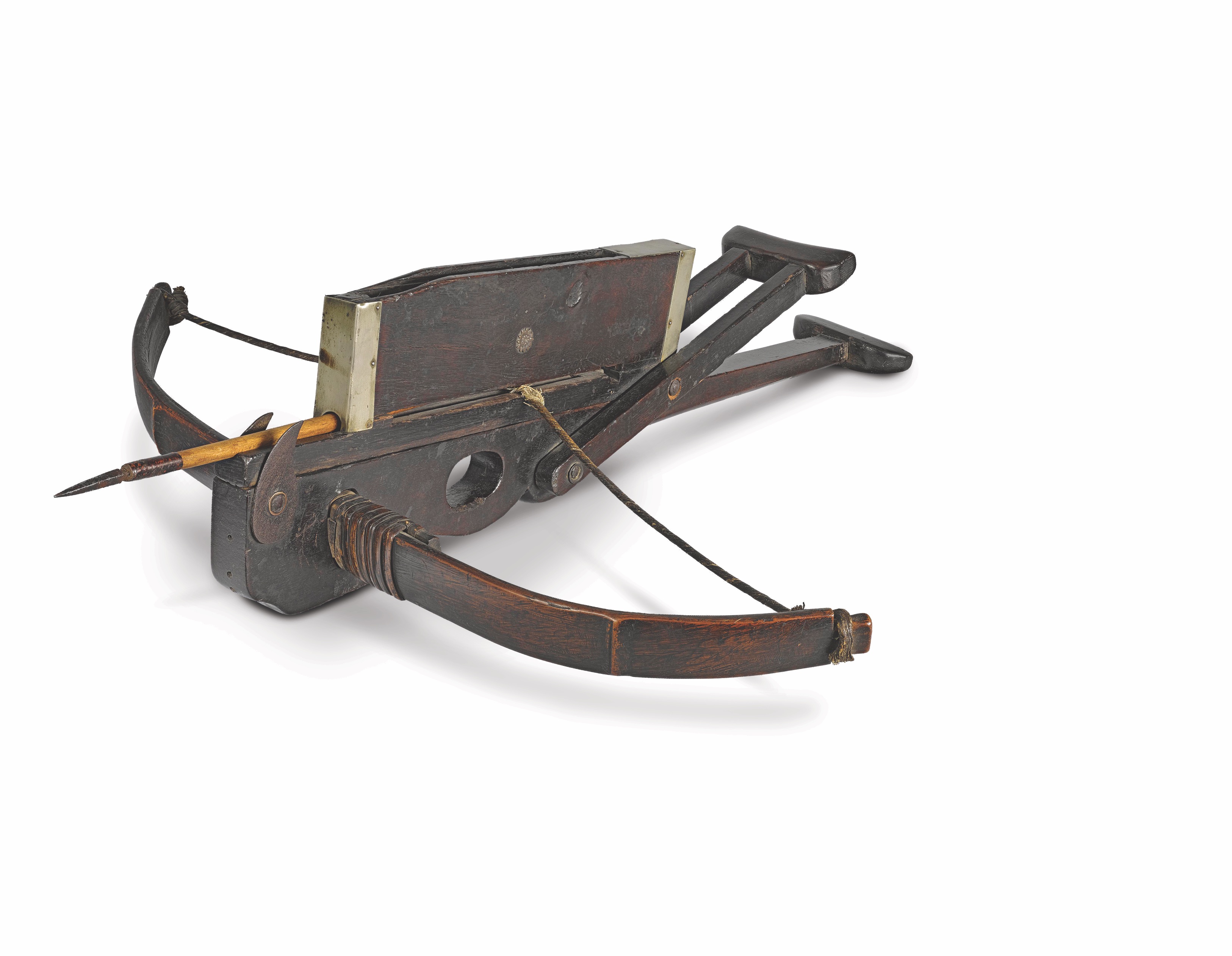The Chinese chukonu—a repeating crossbow—was a magazine-fed semiautomatic weapon, but one predating its firearm equivalents by millennia. Conventional crossbows, invented in China in the seventh century BCE, required far less training to master than standard bows and delivered immense armor-piercing power. Yet they were slow and cumbersome to load, leaving those who wielded them vulnerable to attack.
Developed in the second century BCE, the chukonu was intended to overcome this deficit. It featured a top-mounted magazine, in which multiple bolts were stacked, and a large operating handle. When drawn to the rear, the handle both cocked and, at the full extent of the draw, released the bowstring, firing the bolt that had dropped automatically into the flight groove. There was no separate trigger. The crossbowman then drove the handle forward, pushing the whole mechanism to the front to reengage the string for firing, as the next bolt took its place in the flight groove, ready to go.
This ingeniously simple weapon figured in Asian warfare until the 19th century. A chukonu could unleash 10 bolts in just 20 seconds (a standard crossbow’s top rate of fire was three or four bolts a minute), but there were substantial trade-offs. Its effective range (about 80 yards) was poor, and penetration was limited. To compensate for the latter, crossbowmen generally tipped the bolt heads with poison.
Chris McNab is a military historian based in the United Kingdom. His latest work is Weapons of the U.S. Special Operations Command (Osprey Publishing, 2019).
[hr]
This article appears in the Winter 2020 issue (Vol. 32, No. 2) of MHQ—The Quarterly Journal of Military History with the headline: Weapons Check | Repeating Crossbow (Chukonu)

Want to have the lavishly illustrated, premium-quality print edition of MHQ delivered directly to you four times a year? Subscribe now at special savings!

